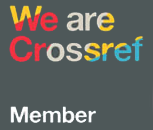The Bulletin of the Institute of Economics of the Russian Academy of Sciences № 4/2023. World Economy.
Aleksandr D. Vasilchenko
Junior Researcher at the Institute of Europe of the Russian Academy of Sciences, Moscow, Russia
Daniil V. Logvinov
2nd year student of Master program “Economics”, Faculty of International Economic Relationships of MGIMO MFA of Russia, Moscow, Russia
Anna A. Semenova
Junior Researcher at the Institute for African Studies of the Russian Academy of Sciences, Moscow, Russia
NON-PRICE DEMAND FACTORS FOR WHEAT IMPORTS IN NORTH AFRICAN COUNTRIES
 157-180 157-180 |
 609.65 KB 609.65 KB |
Abstract
North Africa has firmly established itself as a leading world region in terms of wheat imports. While domestic production remains limited due to natural and climate factors, domestic demand for wheat keeps growing due to fast population growth. That makes the region an attractive grain market, and forces largest exporters to use the whole range of price and nonprice instruments in the competition for the desired market niche. Russian wheat is the most competitive in terms of price. However, as this study shows, in the target region, it is nonprice factors that have a key influence on the decision to conclude a foreign trade contract. In this regard, the purpose of this paper is to reveal, using a panel data model, significant nonprice factors that affect the distribution of market shares of the main suppliers of wheat to the North African market. Taking these factors into consideration will allow underrepresented exporters to increase supplies and secure a niche that fully meets their export potential.
Keywords: export, import, agriculture, wheat market, competitiveness, Algeria, Egypt, Morocco, Tunisia.
JEL: C23, N57, Q17
EDN: OLLZYL
DOI: https://doi.org/10.52180/2073-6487_2023_4_157_180
References
- Al-Hamati M.A. The foreign trade potential of the North African countries in the field of agriculture and food. RUDN Journal of Economics, 30(3), 358–370. 2022. DOI: 10.22363/2313-2329-2022-30-3-358-370. (In Russ.).
- Vasiliev V. French North Africa. Moscow: State Publishing House of Political Literature, 1943. (In Russ.).
- Kuznetsov A.V. Changes in the geography of production in Russia under the influence of the turn of exports to the Global South // Present and future of Russia in a changing world: socio-geographical analysis and forecast / ed. A.G. Druzhinin and V.P. Sidorov. Proceedings of the international scientific conference (Izhevsk, September 13–18, 2021). Izhevsk: Publishing Center “Udmurt University”. 2021. P. 33–38. (In Russ.).
- Abay K.A. [et al.]. The Russia-Ukraine crisis: Implications for global and regional food security and potential policy responses // MENA RP Working Paper 39. Washington, DC: International Food Policy Research Institute. 2022. DOI: 10.2499/p15738coll2.135913.
- Abdelaal H., Thilmany D. Grains Production Prospects and Long Run Food Security in Egypt // Sustainability. 2019. Vol. 11. No. 16. Pp. 1–18. DOI: 10.3390/su11164457.
- Achli S. [et al.]. Vulnerability of Barley, Maize, and Wheat Yields to Variations in Growing Season Precipitation in Morocco // Appl. Sci. 2022. No. 12. Pр. 1–28. DOI: 10.3390/app12073407.
- Asseng S. [et al.]. Can Egypt become self-sufficient in wheat? // Environmental Research Letters. 2018. Vol. 13. No. 9. DOI: 10.1088/1748-9326/aada50.
- Bishaw Z. [et al.]. Political Economy of the Wheat Sector in Morocco: Seed Systems, Varietal Adoption, and Impacts // International Center for Agricultural Research in the Dry Areas, Beirut, Lebanon. 2019.
- Dillon B., Dambro C. How Competitive Are Crop Markets in Sub-Saharan Africa? // American Journal of Agricultural Economics. 2017. Vol. 99. No. 5. Pp. 1344–1361. DOI: 10.1093/ajae/aax044.
- Gutierrez L. [et al.]. Agricultural Grain Markets in the COVID-19 Crisis, Insights from a GVAR Model // Sustainability. 2022. Vol. 14. No. 16. Pp. 1–13. DOI: 10.3390/su14169855.
- Gutiérrez-Moya E. [et al.]. Analysing the Structure of the Global Wheat Trade Network: An ERGM Approach // Agronomy. 2020. Vol. 10. No. 12. Pp. 1–19. DOI: 10.3390/agronomy10121967.
- Schilling J. [et al.]. Climate change vulnerability, water resources and social implications in North Africa. Regional Environmental Change. 2020. Vol. 20. No. 1. 1–12. DOI: 10.1007/s10113-020-01597-7.
- Svanidze M., Đurić I. Global Wheat Market Dynamics: What Is the Role of the EU and the Black Sea Wheat Exporters? // Agriculture. 2021. Vol. 11. No. 8. DOI:10.3390/agriculture11080799.
- Uhl K. M. [et al.]. Russian Market Power in International Wheat Exports: Evidence from a Residual Demand Elasticity Analysis // Journal of Agricultural & Food Industrial Organization. 2019. Vol. 17. No. 2. DOI: 10.1515/jafio-2016-0026.
Manuscript submission date: 05.03.2023
For citation:
Vasilchenko A.D., Logvinov D.V., Semenova A.A. Non-price demand factors for wheat imports in North African countries // Vestnik Instituta Ekonomiki Rossiyskoy Akademii Nauk. 2023. № 4. Pp. 157-180. (In Russ.). https://doi.org/10.52180/2073-6487_2023_4_157_180 EDN: OLLZYL





